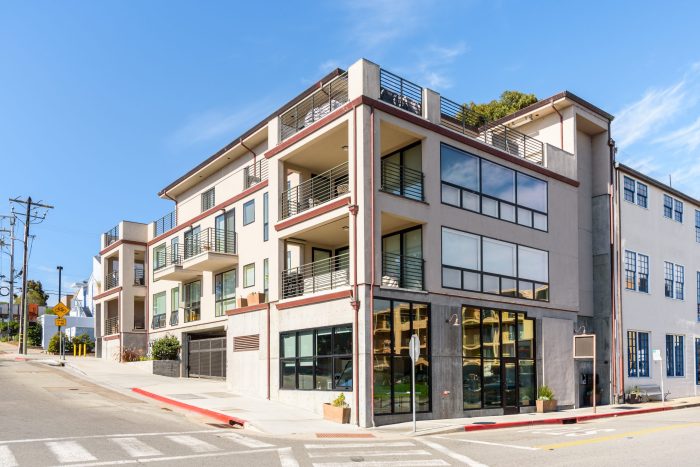Adverse possession vs prescriptive easement – In the realm of property law, the concepts of adverse possession and prescriptive easement often intertwine, presenting a fascinating contrast in the acquisition of property rights. This exploration delves into the intricacies of these doctrines, unraveling their similarities and differences while highlighting their practical implications.
Adverse possession, a method of acquiring title to real property through open, notorious, exclusive, and hostile possession for a statutory period, stands in stark contrast to prescriptive easement, which grants a non-possessory interest in another’s property through similar adverse use.
Introduction

Adverse possessionand prescriptive easementare two legal doctrines that allow individuals to acquire property rights through continuous, open, and notorious use of another person’s property.
Adverse possessiongrants ownership of real property, while prescriptive easementgrants a right to use another person’s property for a specific purpose.
Adverse Possession
To establish adverse possession, the following elements must be met:
- Actual possession: The claimant must physically occupy the property.
- Open and notorious possession: The claimant’s use must be visible to others.
- Exclusive possession: The claimant must be the only person using the property.
- Hostile possession: The claimant must use the property without the owner’s permission.
- Continuous possession: The claimant must use the property for the required statutory period (usually 10-20 years).
Adverse possession can be acquired through various methods, including:
- Enclosed possession: Surrounding the property with a fence or other enclosure.
- Cultivation: Farming or gardening on the property.
- Payment of taxes: Paying property taxes on the property.
- Improvements: Making substantial improvements to the property.
Defenses to adverse possession claims include:
- Permission: The owner gave the claimant permission to use the property.
- Mistake: The claimant mistakenly believed they owned the property.
- Disability: The owner was unable to assert their rights due to a disability.
- Fraud: The claimant obtained possession through fraud or deception.
Prescriptive Easement

To establish a prescriptive easement, the following elements must be met:
- Actual use: The claimant must use the property for the specific purpose.
- Open and notorious use: The claimant’s use must be visible to others.
- Exclusive use: The claimant must be the only person using the property for the specific purpose.
- Hostile use: The claimant must use the property without the owner’s permission.
- Continuous use: The claimant must use the property for the required statutory period (usually 10-20 years).
A prescriptive easement can be acquired through various methods, including:
- Footpath: Walking across the property.
- Driveway: Driving across the property.
- Utility easement: Using the property for utilities, such as water or electricity.
- Agricultural easement: Using the property for farming or gardening.
Defenses to prescriptive easement claims include:
- Permission: The owner gave the claimant permission to use the property.
- Mistake: The claimant mistakenly believed they had a right to use the property.
- Disability: The owner was unable to assert their rights due to a disability.
- Fraud: The claimant obtained the easement through fraud or deception.
Comparison of Adverse Possession and Prescriptive Easement: Adverse Possession Vs Prescriptive Easement

| Adverse Possession | Prescriptive Easement | |
|---|---|---|
| Rights Acquired | Ownership of real property | Right to use another person’s property for a specific purpose |
| Elements | Actual, open, notorious, exclusive, hostile, continuous possession | Actual, open, notorious, exclusive, hostile, continuous use |
| Methods of Acquisition | Enclosed possession, cultivation, payment of taxes, improvements | Footpath, driveway, utility easement, agricultural easement |
| Defenses | Permission, mistake, disability, fraud | Permission, mistake, disability, fraud |
Advantages of Adverse Possession:
- Grants full ownership of the property.
- Can be acquired without the owner’s knowledge or consent.
Disadvantages of Adverse Possession:
- Requires long-term, continuous possession.
- Can be difficult to prove.
Advantages of Prescriptive Easement:
- Grants a specific right to use the property.
- Can be acquired more quickly than adverse possession.
Disadvantages of Prescriptive Easement:
- Does not grant ownership of the property.
- Can be more difficult to prove than adverse possession.
FAQ Section
What is the primary distinction between adverse possession and prescriptive easement?
Adverse possession grants title to real property, while prescriptive easement establishes a non-possessory interest in another’s property.
What are the essential elements required to establish adverse possession?
Open, notorious, exclusive, hostile, and continuous possession for the statutory period.
Can a prescriptive easement be extinguished?
Yes, through abandonment, non-use for the statutory period, or express release.